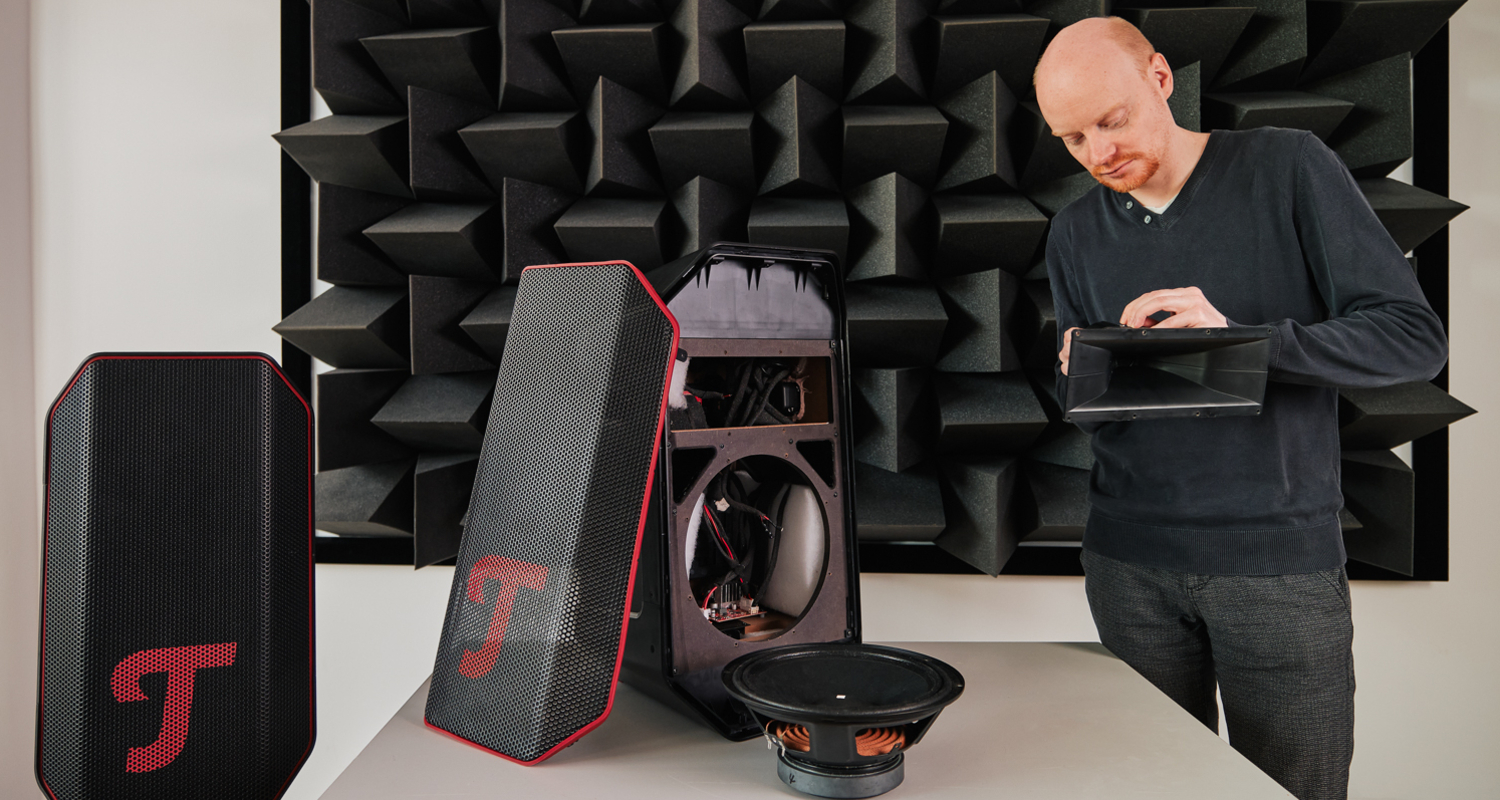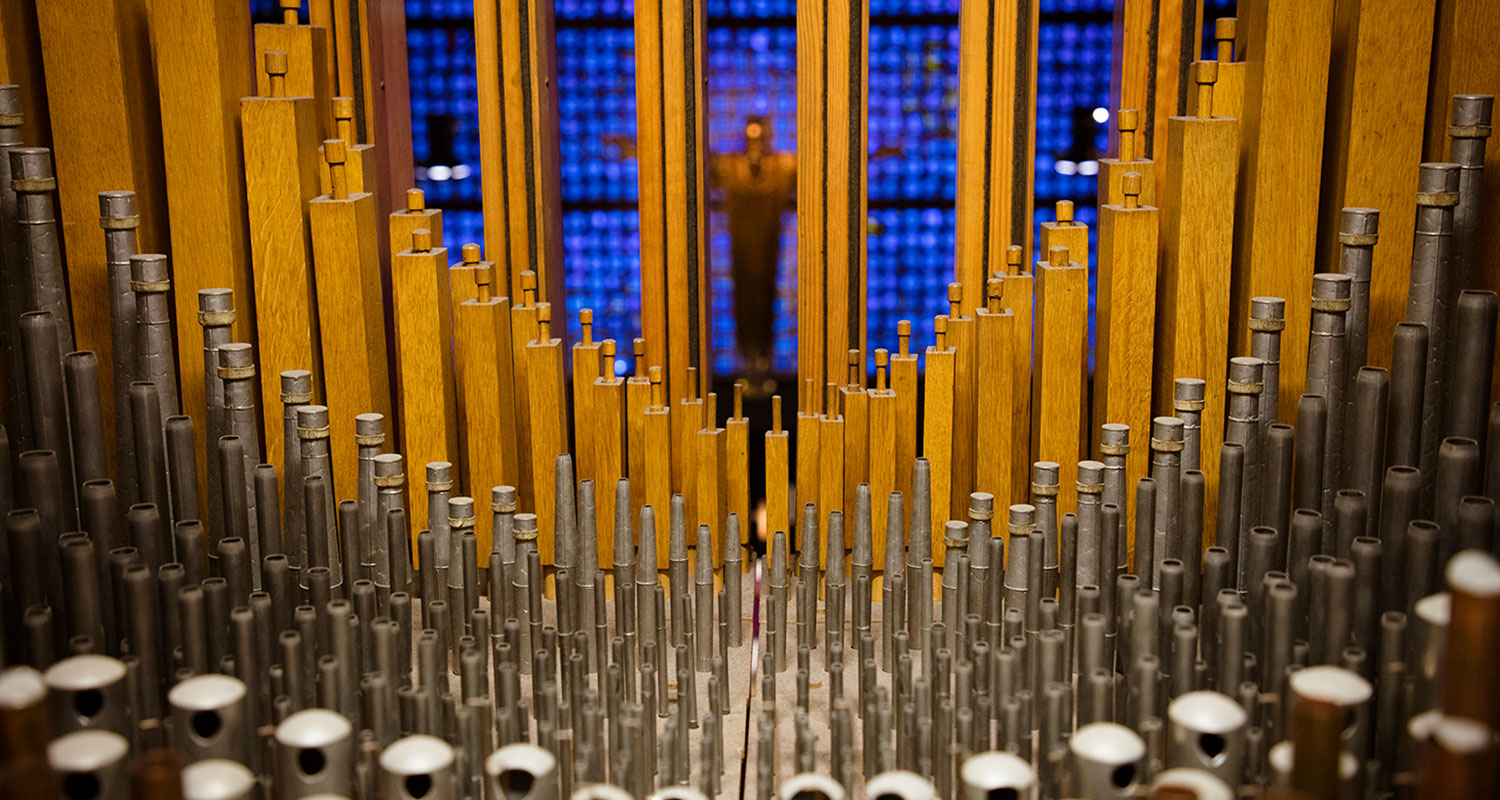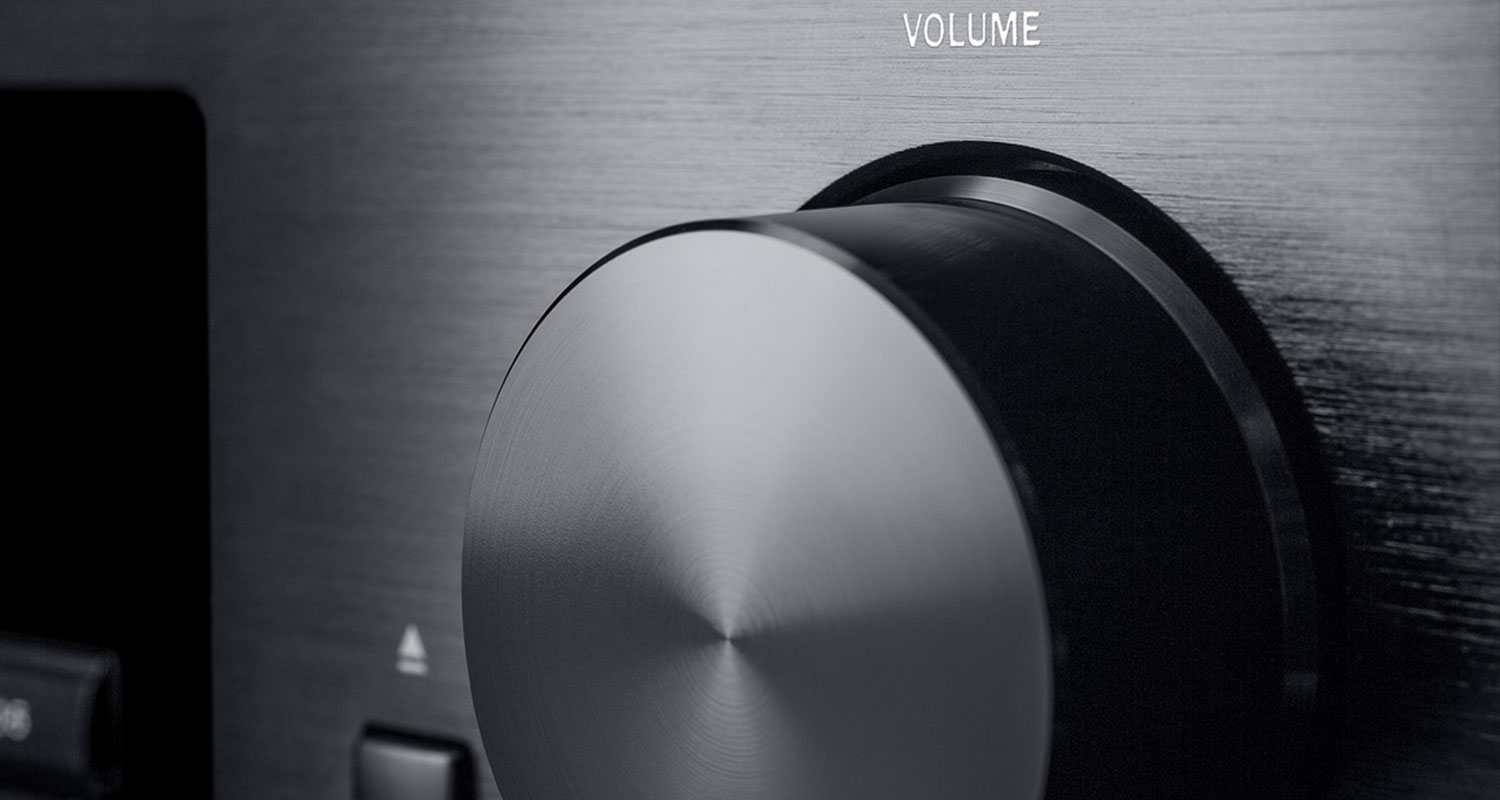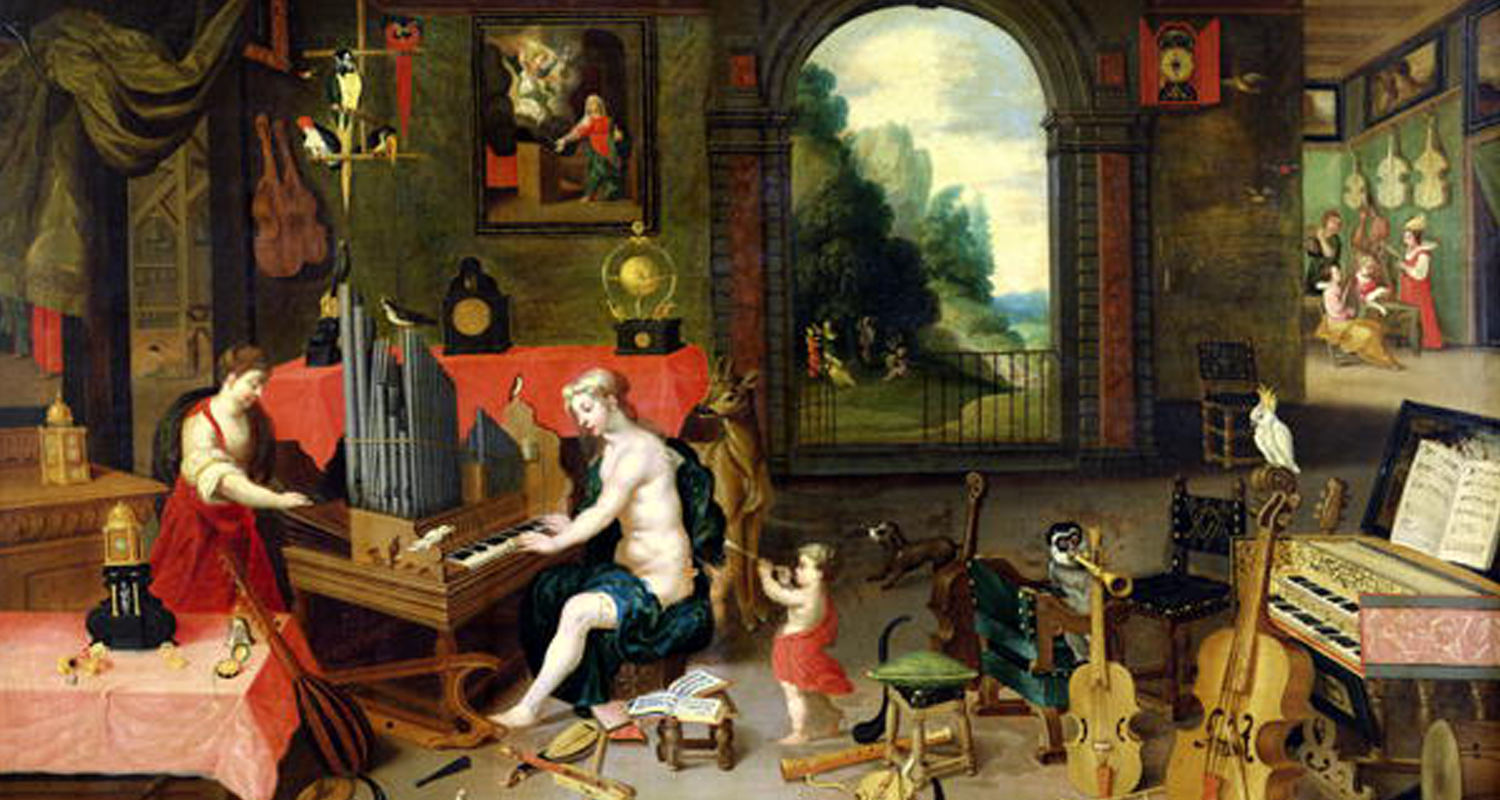Teufel has just released the ROCKSTER AIR 2, a follow-up to the much-loved ROCKSTER AIR, with a full set of upgrades both to the underlying tech, and the acoustic setup and components. To get a fuller picture of what’s changed and how, we sat down with Max, an acoustic engineer and team lead for the ROCKSTER AIR 2’s development.
HIFI qualities, loud, raw power
Linktip: Check out the ROCKSTER AIR 2Opens in new tab product page
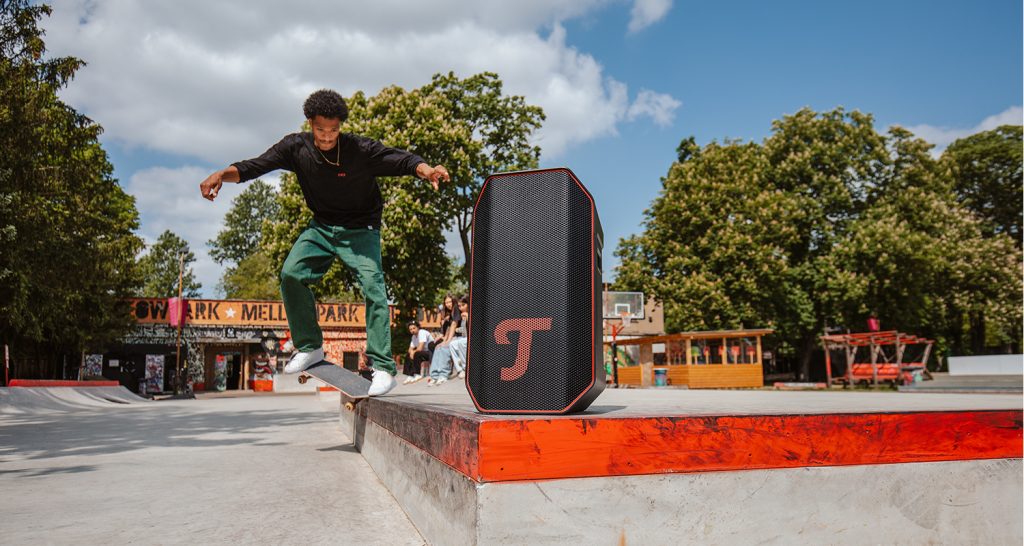 Opens in new tab
Opens in new tabTeufel Blog: Hey Max, thanks for taking some time today to tell our readers about the ROCKSTER AIR from an acoustic perspective. First tell our readers a bit about yourself!
Max: I’ve been Senior Acoustic Manager at Teufel’s Team Innovation & Development for a good 5 years now, and I have a lot of experience designing speaker systems in the consumer and pro audio fields. My team is responsible for coming up with the acoustic background concepts behind Teufel products.
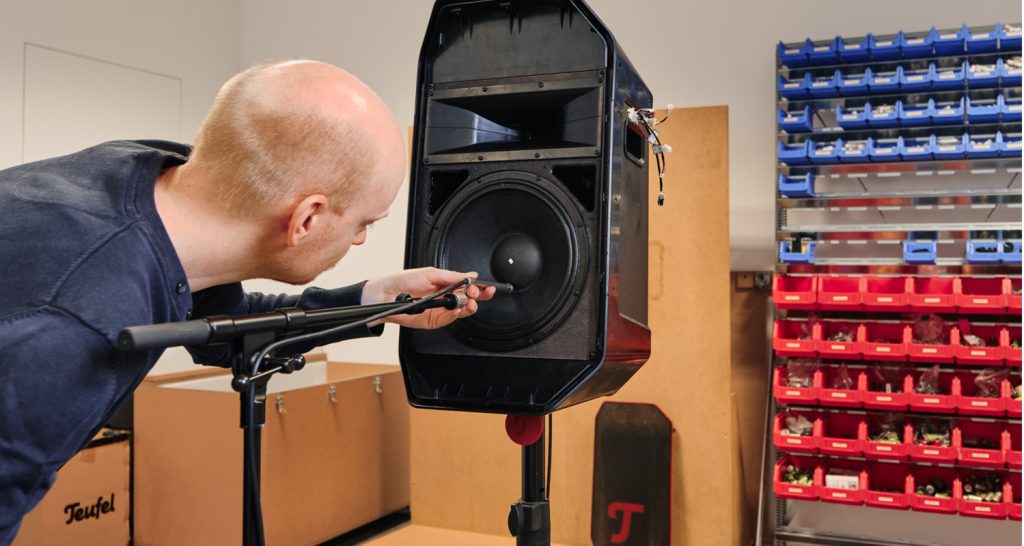 Opens in new tab
Opens in new tabTeufel Blog: When designing the ROCKSTER AIR 2, you incorporated customer feedback from the ROCKSTER AIR, as Teufel always does. What are the biggest updates from an acoustic perspective?
Max: Customers liked the intense, crunchy bass of the predecessor, so we put bass performance front and center in this model as well. The midwoofer in this one is equipped with almost double the power. Customers also said the sound of the old one had a somewhat unbalanced character, so we re-engineered the 1-inch treble compression driver from scratch. In combination with the Constant Directivity Waveguide, which we invented here in-house, it now produces cleaner and less distorted trebles that can reach up to the limit of human hearing no problem. So overall, the new ROCKSTER AIR 2 is more than just loud, raw power. It has true HIFI qualities.
The advantages of the new Constant Directivity Waveguide
Teufel Blog: Can we go a bit deeper on the Constant Directivity Waveguide? It’s a pretty rare feature for its class. How did you land on it’s design, and what advantages does it bring?
Max: We engineered the waveguide completely in-house using computer simulations. The first prototypes we made here with our 3D printers as proof of concept, which took a lot of fine-tuning before going into production. The advantage of the waveguide is that the audio signature of the ROCKSTER AIR 2 stays relatively stable for listeners in many different positions, not just right in front of the speaker, which is why we say it has “Constant Directivity.”
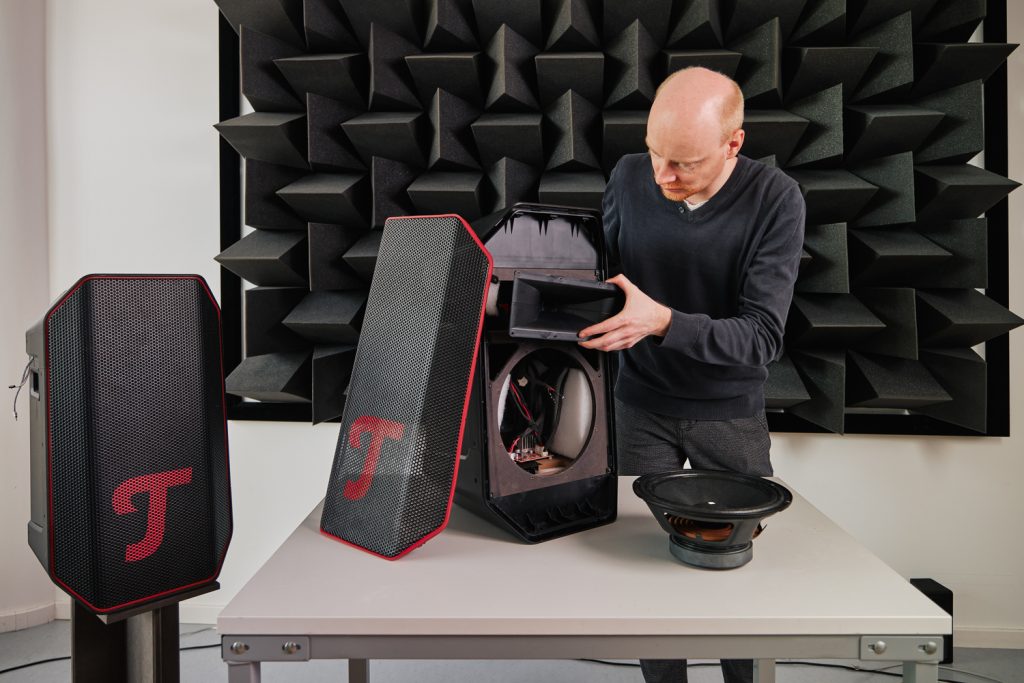 Opens in new tab
Opens in new tabThat does a lot to increase the ROCKSTER AIR 2’s listening radius, meaning the sound stays balanced, clear, and powerful over a large area. The waveguide also generally improves the efficiency of the tweeter system, which means the 1-inch compression driver doesn’t have to work so hard, and thus produces less audible distortion noise.
Teufel Blog: Mid tones also sound significantly more natural on the ROCKSTER AIR 2 than before. How’d you achieve that?
Max: We rebuilt the 10-inch midwoofers from the ground up, which allowed us to improve the sensitivity and resonance behavior in the upper midrange significantly compared to ROCKSTER AIR 1, which comes through in balanced, crisp vocals. Adding to that, compared to the original, the DSP signal processing is much higher capacity, which means at high volumes some frequency ranges of the midwoofer are adaptively restricted to defined ranges, which keeps clanging and banging sounds to a minimum. The result is less distortion noise with high-powered sound at all volume levels.
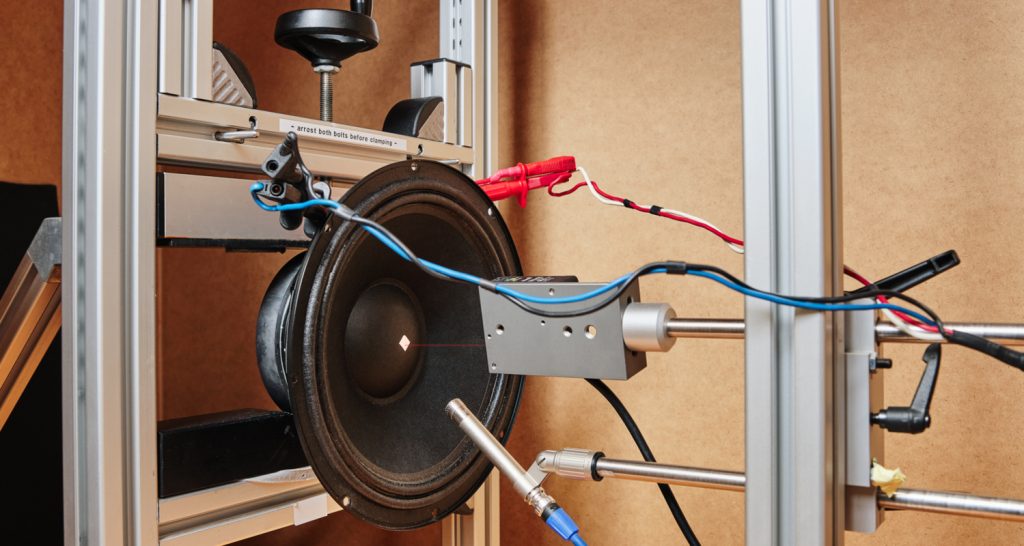 Opens in new tab
Opens in new tabLinktip: Check out the ROCKSTER AIR 2Opens in new tab product page
We improved upon the bass reflex ports
Teufel Blog: You also redid the shape and positioning of the bass reflex ports. What made that necessary, and what are the benefits for the sound image?
Max: The previous model had the bass reflex ports positioned very far down on the baffle, almost right above the bottom edge. That led to a lot of users getting dust and other particles blowing into the ports, particularly when using the speaker outside. Also, the previous model had simple round tubes for bass reflex, which caused significant audible distortion at high volume levels. We improved on both points – the bass reflex ports on the ROCKSTER AIR 2 are positioned in the middle of the baffle, and used the extra space around the 10-inch midwoofer to round out the ports generously in a way that minimized turbulence from oscillating air. That way, the sound image remains clean and low on noise even at high volume levels.
Significantly cleaner and more powerful bass production
Teufel Blog: Speaking of sound image, did the changes to the improved 10-inch midwoofers have a decisive influence on sound production? If so, what?
Max: The 10-inch midwoofers have nearly double the magnetic driver power compared to the previous model, meaning that even with identical internal housing volume, it can get almost 2 dB more efficiency. That means, in comparison with the previous model, the bass is much more clean and powerful.
Teufel Blog: The new ROCKSTER AIR 2 comes with two battery modes: Normal and Eco. Do they impact the sound image? If so, which mode do you recommend?
Max: With Eco mode deactivated, the ROCKSTER AIR 2 sounds very powerful and can reach its full 115 dBSPL, which is what consumers expect from Teufel sound. With Eco mode active, the maximum volume is reduced and the bass range will be somewhat restricted. In Eco mode, the system’s volume is much lower and less powerful. However, the battery life is improved dramatically. For users who want to have maximum possible sound-performance ratio and don’t have to worry about the ROCKSTER AIR 2’s battery life, I would recommend using Normal mode. But if you don’t want to go quite as wild, and want the system to keep laying as long as possible, go ahead and switch on Eco mode.
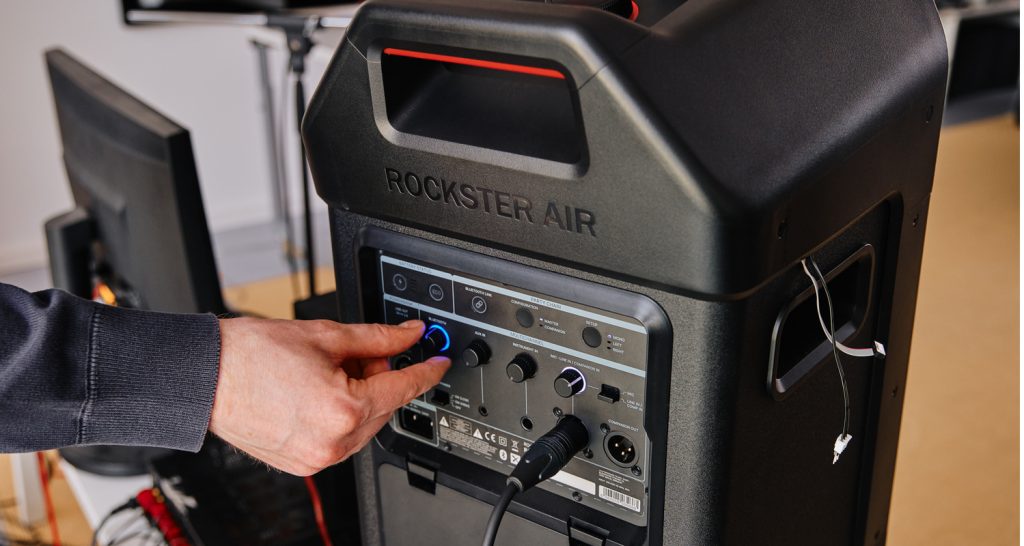 Opens in new tab
Opens in new tabTeufel Blog: The ROCKSTER AIR 2 doesn’t sound like a typical PA system, but a high-end HIFI audio speaker, despite being just as loud as a PA at the same size. How did you achieve that?
Max: A combination of very powerful drivers, high efficiency class-D amplifiers, and modern DSP signal processing. All that made it so the new ROCKSTER AIR 2 can do more than just loud and powerful sound – it also sounds amazing.
The Cost Of Freedom: the perfect way to demonstrate its acoustic capabilities
Teufel Blog: Is there a particular song or playlist that you used during development for testing the sound?
Max: A song people used to love to play in my time in pro audio is The Cost of Freedom by Marla Glen. It covers a wide range of the audio spectrum and has lots of dynamics and punch, which makes it perfect to demonstrate the acoustic qualities of the new ROCKSTER AIR 2 in comparison with its predecessor.
Teufel Blog: If you had your own ROCKSTER AIR 2, where would you play it and what would be your first song?
Max: In my yard at a grill party. My first song would be Stadtaffe by Peter Fox, because it’s a song with a lot of power and production value. It’s perfect for the audio characteristics of the system.
Wireless pairing for stereo playback
Teufel Blog: Which other new features are relevant for the audio performance and are upgrades in comparison to the previous model?
Max: The biggest highlight in that context is ability to pair two ROCKSTER AIR 2s together wirelessly over Bluetooth for stereo sound. Users are also free to configure which speaker is left and which is right. That gives users a lot of freedom for different applications. With Constant Directivity, that makes its amazing, space-filling sound perfect for small stages, basement parties, or living rooms without needing to connect both ROCKSTER AIR 2s with a cable. With fully charged batteries, they can then be used without any cables at all.
Teufel Blog: Thanks so much for giving us a peek behind the curtain! I’m sure the AIR 2 is going to kick off a lot of parties in the future!
Linktip: Check out the ROCKSTER AIR 2Opens in new tab product page
- All photos: Teufel
